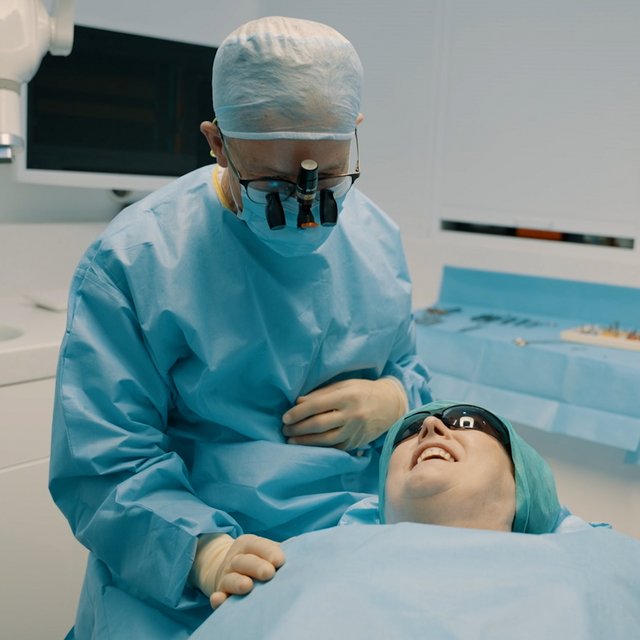Educating your patients on periodontal surgery


Empower your patients with knowledge
Periodontal surgery can seem intimidating to patients. Although they desire positive outcomes, minimizing pain is often their primary concern. This concern can lead to avoiding or postponing treatments, which worsens their health situation. As a trusted healthcare professional, you can educate and reassure your patients about the benefits of surgery.
The importance of patient education
Recent studies have highlighted the importance of patient education in dentistry. Most publications focus on health education as primary prevention. Patient education, however, is a secondary form of prevention. It aims to reduce the effects of chronic diseases like periodontitis.1
Literature reviews show that patient education offers significant bio-clinical, cognitive, psychological, and economic benefits.1 Well-informed patients understand their health issues and treatment options better. Consequently, they are more likely to comply with treatment plans and improve their self-care techniques. This can shorten overall treatment duration.1
This post provides you with techniques to help you convey the importance of periodontal surgery. The goal is to help patients understand the process and consider it for their treatment plan. At the end of the post, you will find links to helpful patient education tools.
Best practices for effective patient communication on periodontal surgery
Patient education is a crucial tool in your repertoire as a healthcare provider. It empowers patients to make informed decisions and take proactive steps toward improving their oral health. Effective patient education requires multiple sessions over time. It is not just a one-off intervention.1
Here are some strategies for effective communication that help convince your patients to consider surgery:
- Screening assessment (Educational diagnosis): The first step to education is to determine the patient's previous knowledge and learning needs.1
- Clear and simple language: Avoid medical jargon to clearly explain the procedure. Highlight the steps involved, the expected outcomes, and the benefits of undergoing the surgery.
- Visual aids: Use diagrams, videos, and other visual aids to explain the procedure and its benefits. Visual aids are particularly effective in explaining complex concepts and making the information more accessible.
- Patient testimonials: Success stories from other patients can be a powerful tool to build trust. Hearing about positive experiences from others can help alleviate fears and encourage patients to proceed with the treatment.
- Educational materials: Provide Flyers, helpful websites, and other educational materials that patients can take home and review. You will find helpful links to these tools at the end of this post.
Key points to cover during patient communication
The following points are a proposal on how you can structure the discussion with your patient:
- Purpose and benefits: Explain that periodontal surgery is designed to treat gum disease and improve oral health. You can find a more detailed description of the most important benefits below.
- The procedure: Describe the steps involved in the surgical procedure, including the products used and the techniques employed.
- Recovery: Provide information on what patients can expect during the recovery period. Share helpful tips for a smooth healing process.
- Concerns and questions: Be prepared to address any concerns or questions your patients may have about the surgery. Provide clear, reassuring answers and emphasize the positive outcomes and success rates of the procedure.
Highlighting the benefits of periodontal surgery
Periodontal surgery offers several benefits that can significantly improve a patient's oral health and overall well-being. Your task is to convey these benefits straightforwardly and clarify any concerns.
- Improved oral health: Periodontal surgery prevents further damage to the gums and supporting tissues. It addresses underlying issues, not just symptoms. This helps stop the disease from progressing and protects tissues from further damage. Patients should understand that postponing the treatment may mean that they risk losing their teeth in the long run.
- Enhanced aesthetics: In addition to improving oral health, periodontal surgery can also enhance the aesthetics of a patient's smile. By restoring the health of the gums, the surgery can lead to a more attractive and confident smile.
- Systemic effects: Periodontal health is closely linked to systemic health conditions, such as diabetes and heart disease.2–4 By making patients aware of this topic, you can clearly emphasize the importance of treating periodontitis.
The next steps to get started
Educating your patients about periodontal surgery is crucial for their understanding and acceptance of the treatment. Effective communication, including clear language, visual aids, and patient testimonials, can help alleviate fears and highlight the benefits of surgery, such as improved oral health and aesthetics. Here are two helpful tools to help you enhance your patient communication:
1. Visit the Geistlich patient education website
Encourage your patients to visit our patient information website for more information on periodontal surgery. The site provides a comprehensive summary of causes, symptoms, and treatment of periodontitis.
2. Download the patient information flyer
Don't forget to provide your patients with the flyer on periodontal surgery that they can download from our website. This flyer offers valuable information and can help highlight the importance of surgical treatment. It also provides helpful recovery tips for periodontal surgery.
References
1. Albano MG, et al.: Eur J Dent Educ 2019;23(2):110–18. (Review)
2. Martínez-García M, Hernández-Lemus E: Front Physiol 2021;Oct 27;12:709438. (Review)
3. Matos GRM, De Godoy MF: J Maxillofac Oral Surg 2024.:1–2. (Letter)
4. Mainas G, et al.: Medicina (Kaunas). 2022 Apr 29;58(5):621. (Review)

Dr. Amit Patel
Specialist in Periodontics & Implant Dentist,
University of Birmingham

